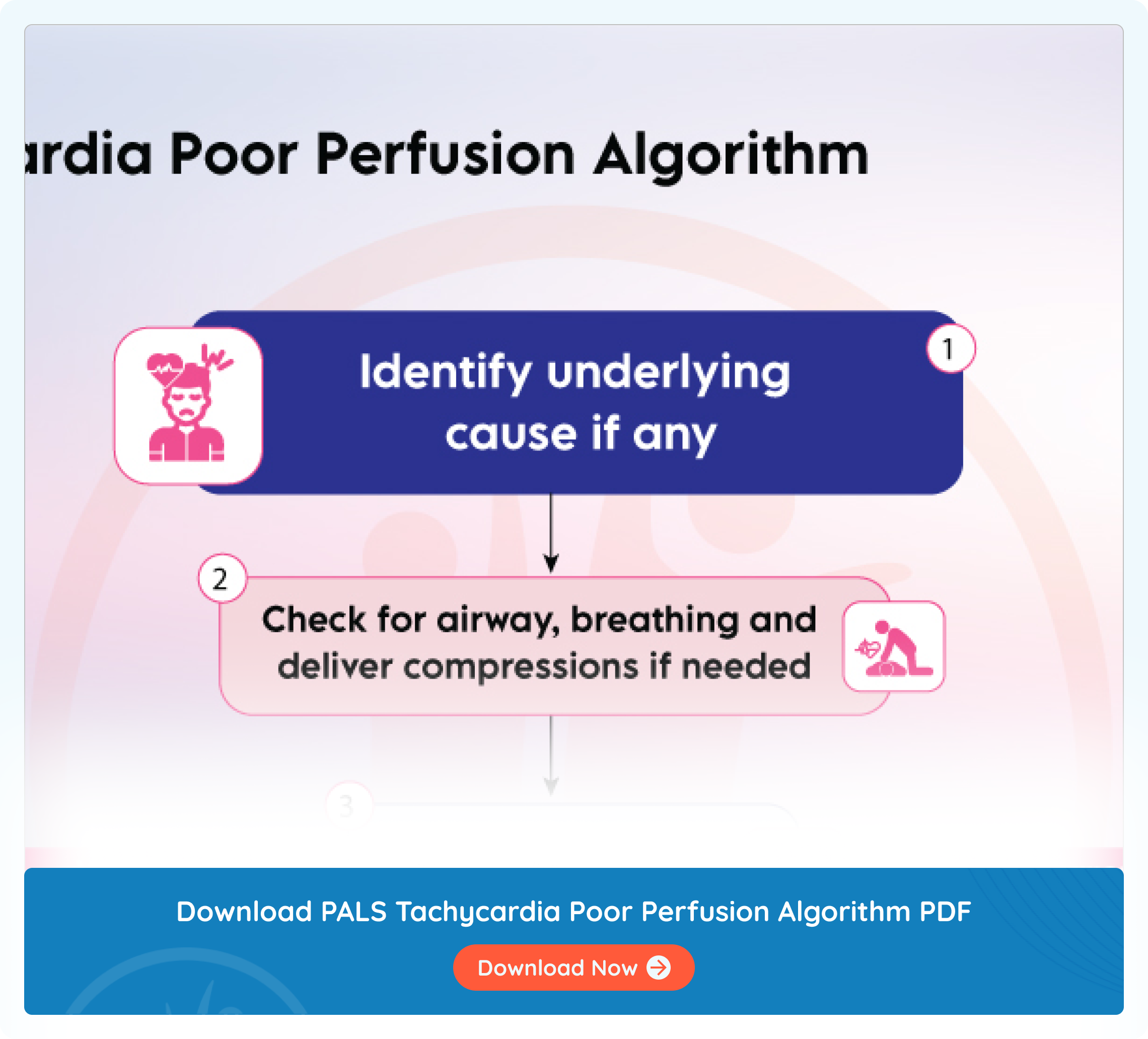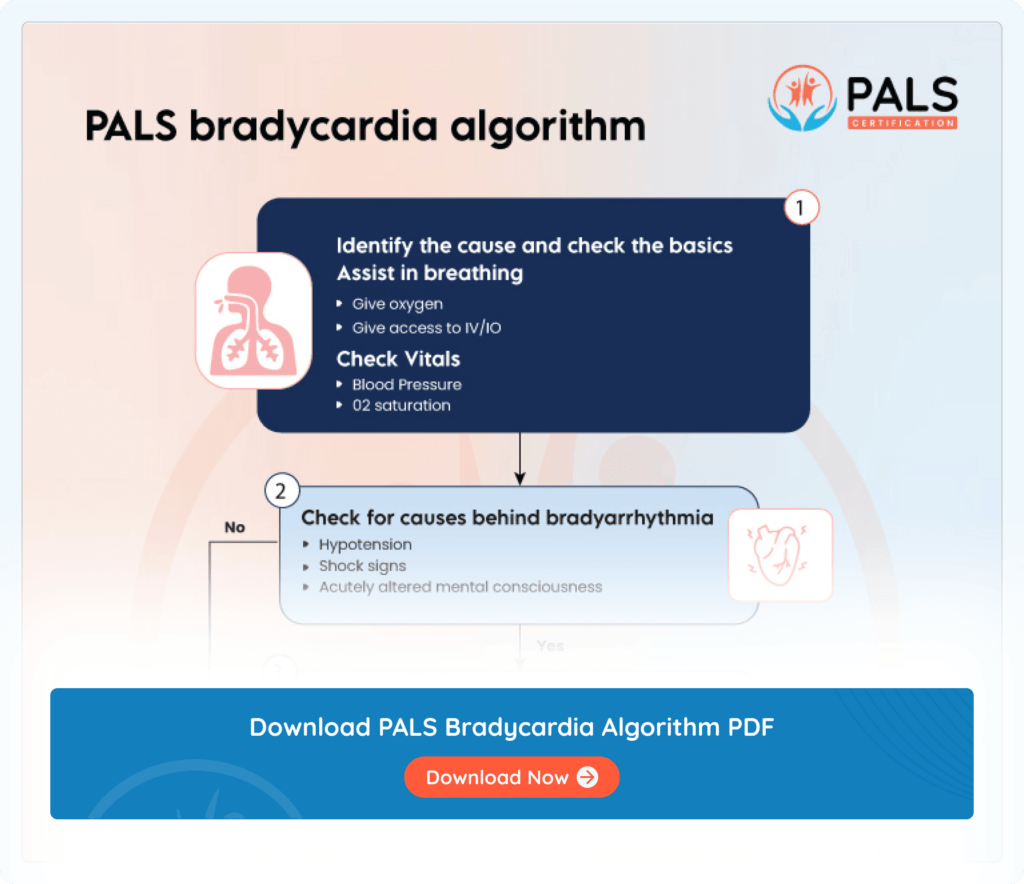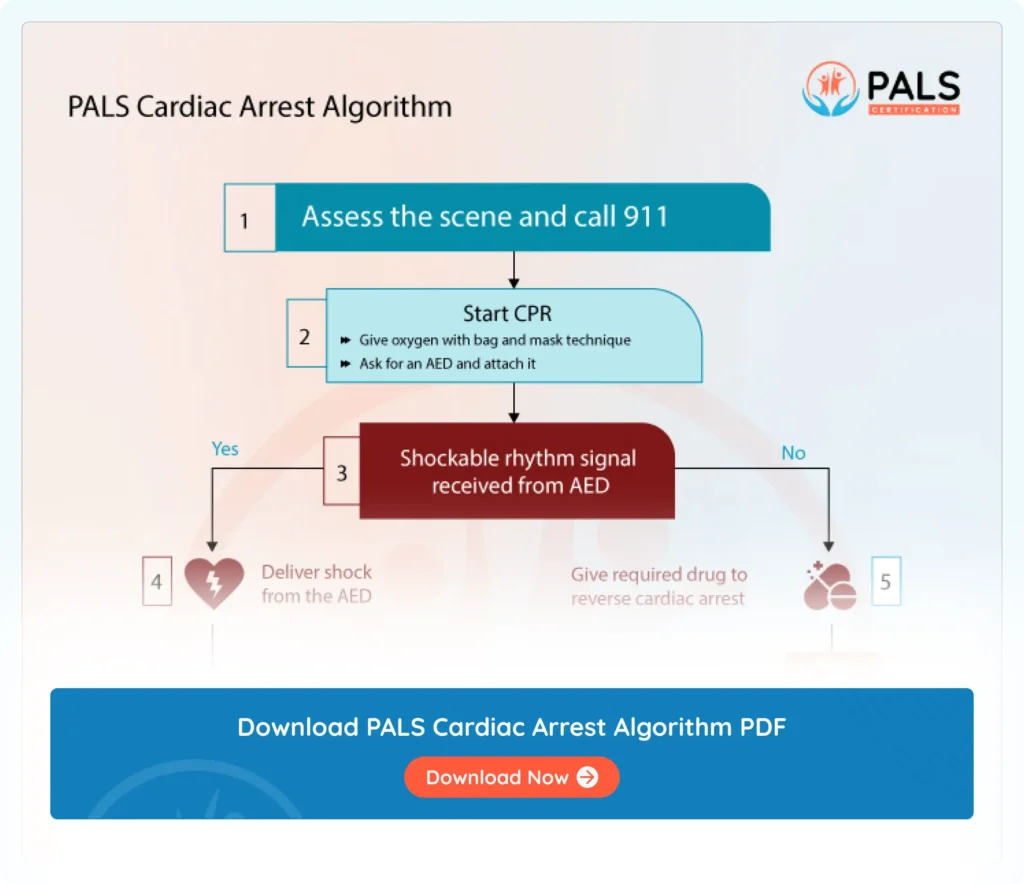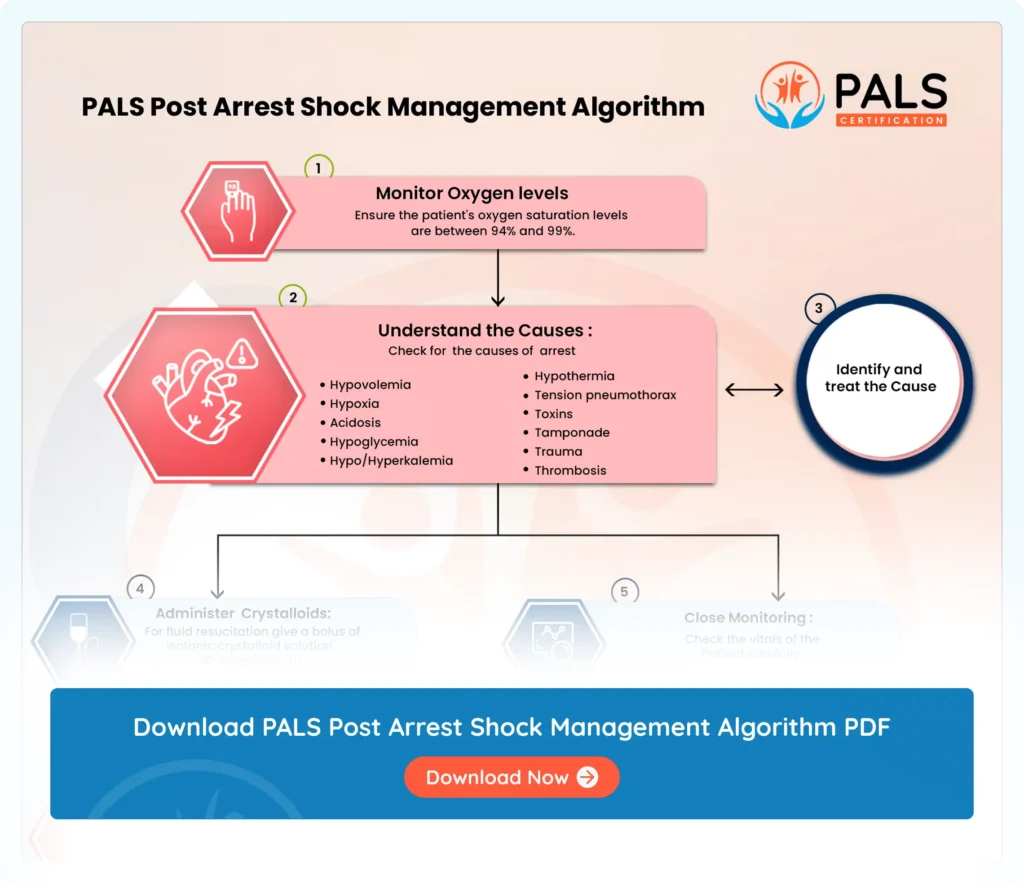- 4.0 - 8.0 CE Credit Hours
- For Pediatric Responders
- Includes Videos, Megacode Scenarios, Practice Tests & More
- FREE BLS Included
The PALS (Pediatric Advanced Life Support) Tachycardia Poor Perfusion Algorithm furnishes a framework employed in pediatric emergency medicine to handle instances of tachycardia accompanied by signs of poor perfusion, such as modified mental status or chilly, moist skin. It supplies detailed directives for evaluating and managing unstable tachycardia in children to enhance perfusion and stabilize their condition.
This algorithm is applied in hospital emergency departments, pediatric intensive care units, and other healthcare settings where pediatric cardiac emergencies arise.

Online PALS certification and recertification
- Compliant with ECC and OSHA guidelines
- Nationally accepted course
- Available anytime, anywhere
- Earn CE credit hours
$119.00

Details of Flowchart
- Potential Underlying Factors: Upon detecting inadequate perfusion, examine for potential underlying issues such as sepsis or hepatomegaly.
- ABC: If the child’s condition does not improve, attempt to clear the airway, administer rescue breaths, and perform chest compressions.
- QRS Evaluation: Assess whether the QRS complex is narrow (≤0.09 sec) or wide (>0.09 sec).
- Wide QRS Assessment: If the QRS complex is wide, evaluate the child’s vital signs for stability or instability.
- Compromised Child: In the event of a compromised child, prompt cardiologist intervention is essential.
- Uncompromised Child: If the child is not compromised, commence cardioversion.
- Narrow QRS: In cases of narrow QRS tachycardia, initiate PALS and employ the appropriate perfusion algorithm
Key Highlights
- Heart Range
Age Group Normal Heart Rate (bpm) Newborns (0 to 1 month) 70 to 190 beats per minute (bpm) Infants (1 to 12 months) 80 to 160 bpm Toddlers (1 to 3 years) 80 to 130 bpm Preschoolers (3 to 5 years) 80 to 120 bpm School-age children (6 to 12 years) 70 to 110 bpm Adolescents (13 to 18 years) 60 to 100 bpm *The above are general guidelines, and individual variations may occur. You must consult a healthcare provider for specific concerns about your child’s heart rate.
- Cardioversion Rules
QRS narrow and regular 50-100 Joules QRS narrow and irregular 120-200 Joules QRS wide and regular 100 Joules QRS wide and irregular Turn off the synchronized mode and defibrillate immediately
Available Courses
PALS Certification and Recertification Online
ACLS Certification and Recertification Online
- 4.0 - 8.0 CE Credit Hours
- For Healthcare Professionals
- Includes Videos, Megacode Scenarios, Practice Tests & More
- FREE BLS Included
$119.00 $169.00
Get CertificateBLS Certification and Recertification Online
- 6.0 CE Credit Hours
- For Medical Fields
- Includes CPR & First Aid Bag-Mask Techniques
$36.95 $39.90
Get CertificateSources
- Supraventricular Tachycardia https://www.ncbi.nlm.nih.gov/books/NBK441972/
- Emergency diagnosis and management of pediatric arrhythmias https://www.ncbi.nlm.nih.gov/pmc/articles/PMC2938490/
- Normal ranges of heart rate and respiratory rate in children from birth to 18 years: a systematic review of observational studies https://www.ncbi.nlm.nih.gov/pmc/articles/PMC3789232/
- Synchronized Electrical Cardioversion https://www.ncbi.nlm.nih.gov/books/NBK482173/
All PALS Algorithms

PALS Bradycardia Algorithm
The PALS Bradycardia Algorithm is a systematic approach for managing slow heart rates in pediatric patients.

PALS Cardiac Arrest Algorithm
The PALS (Pediatric Advanced Life Support) algorithm is a standardized set of guidelines used in emergency medicine to manage pediatric cardiac arrest situations.

PALS Post Arrest Shock Management Algorithm
PALS Post Arrest Shock Management Algorithm outlines steps after ROSC for pediatric patients emphasizing critical interventions for stabilization


